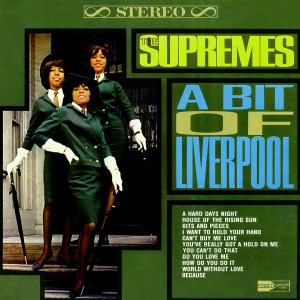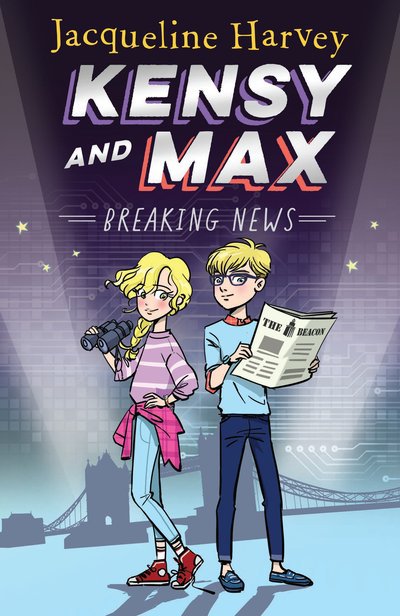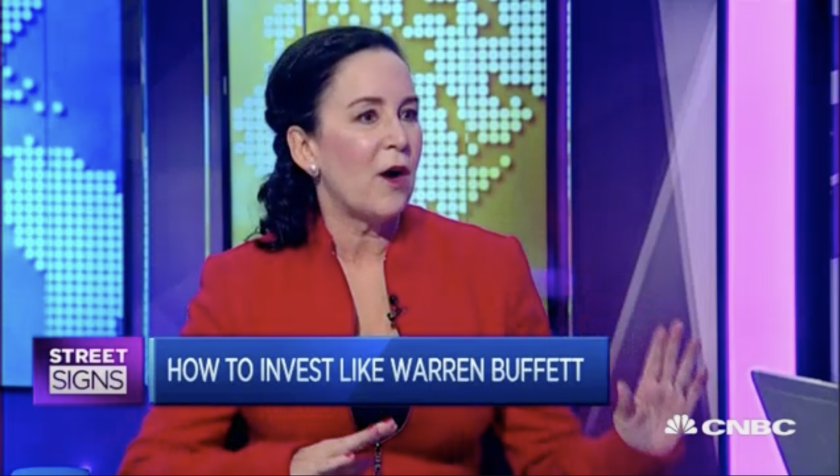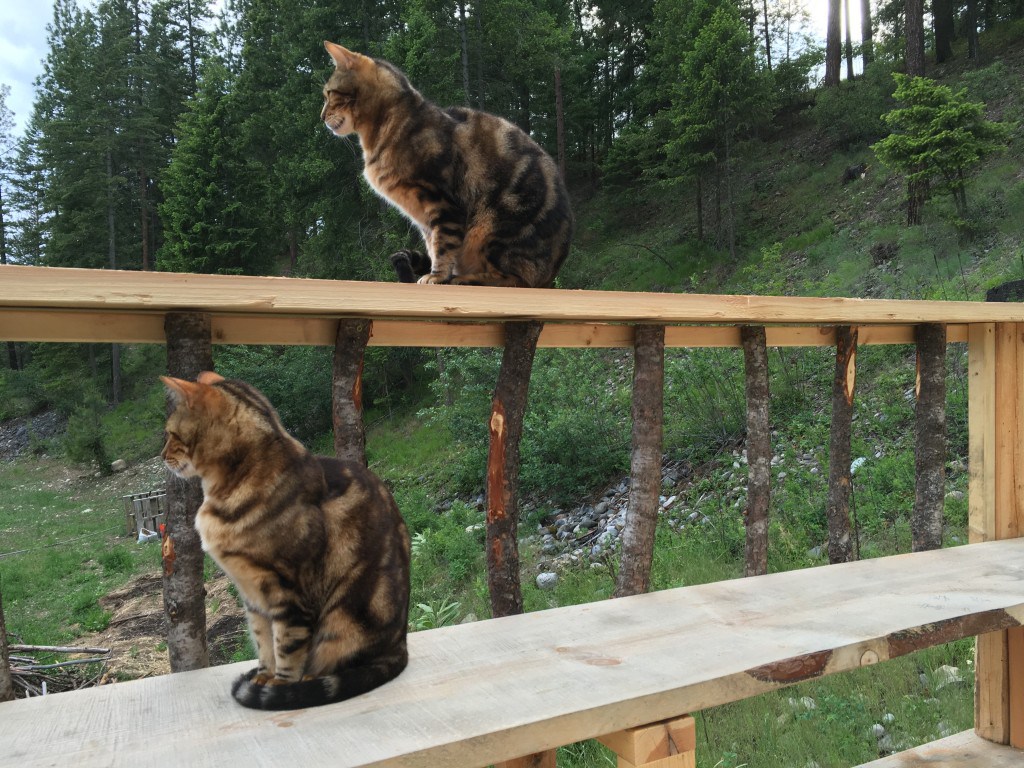Hello there! This is another entry in our blog series “Tim’s Cover Story Goes to the Movies.” In these posts, we review a rock and roll tune that features prominently in a film.
This week’s entry is Can’t Buy Me Love, a great early Beatles pop tune that was featured in their first movie A Hard Day’s Night. We will then discuss covers of that song by The Supremes and Michael Buble.
The Beatles and A Hard Day’s Night:
The Beatles tune Can’t Buy Me Love was composed in 1964 by Paul McCartney. The song was recorded in January 1964, when the group was in Paris for a series of concerts at the Olympia Theatre.
Below is a photo of the Fab Four on the cover of a 1964 “fanzine.” Clockwise from lower left: John Lennon; George Harrison; Paul McCartney; Ringo Starr.
Embed from Getty ImagesAt that time the German division of EMI, the Beatles’ record company, insisted that no one in Germany would buy pop records unless they were sung in German. Of course, that argument turned out to be totally false, yet another demonstration that 60s record executives were clueless about rock ‘n roll.
While they were in Paris, the Beatles went into the studio to record backing tracks for the German-language versions of She Loves You and I Want To Hold Your Hand. As was common in those days, the Beatles completed their studio work in remarkably short order. So in their remaining time they began recording Paul’s new song, Can’t Buy Me Love.
Paul’s original concept for this song differed from the eventual result. When Beatles producer George Martin heard the tune, he remarked that it might sound better if Paul inserted a couple of lines from the chorus at both the beginning and end of the song. So Paul adopted Martin’s suggestion.
Can’t Buy Me Love differs significantly from prior Beatles songs, in that it lacks the group’s signature background vocals. The song was originally intended to contain those vocals, but when the lads heard Paul’s solo version, they decided to include Paul’s double-tracked vocals instead.
This tune is also exceptional in that this is one of only two Beatles song not recorded in the U.K. The other is the 1968 song The Inner Light, for which instrumental parts were recorded in India by George Harrison and classical Indian musicians.
Can’t Buy Me Love was released in the U.S. and U.K. in March 1964, and immediately climbed to the top of the charts. This gave the Beatles three consecutive #1 hits on the Billboard Hot 100 charts.
In addition,
when “Can’t Buy Me Love” reached number 1, on 4 April 1964, the Beatles held [the] entire top five on the Hot 100, the next positions being filled by “Twist and Shout”, “She Loves You”, “I Want to Hold Your Hand” and “Please Please Me”, respectively. No other act has held the top five spots simultaneously.
The following week, the Beatles had an astonishing 14 songs in the Hot 100 at the same time!
Can’t Buy Me Love played an important role in the first Beatles film A Hard Day’s Night. The title of the film was based on a casual remark by Ringo in a press conference. He referred to the previous evening’s concert as “a hard day’s night,” cracking up John Lennon. Eventually it was decided to make that the movie title.
The director was Richard Lester, an American who had previously directed a short movie called The Running, Jumping & Standing Still Film, with actors Peter Sellers and Spike Milligan from the BBC radio program The Goon Show.
The Beatles (and John Lennon in particular) were big fans of the earlier Lester film, so he was brought in to direct the Beatles movie. A Hard Day’s Night was filmed on a shoestring budget of about $500,000, and was rushed into production. It was claimed that the movie was filmed quickly as it was
a low-budget exploitation movie to milk the latest brief musical craze for all it was worth.
As yet another example of corporate stupidity, executives from United Artists requested that the Beatles’ voices be over-dubbed with American accents. Richard Lester’s response was
“Look, if we can understand a fucking cowboy talking Texan, they can understand us talking Liverpool.”
A Hard Day’s Night is a fictional portrayal of several days in the life of a pop group (the Beatles). Initially, the band are pursued by a mob of screaming fans as they board a train from Liverpool to London. The various scenes are punctuated by Beatles songs.
On the train, Paul’s grandfather is confined to the guard’s van, and the Fab Four join him there. After they arrive at their London hotel, the Beatles escape from performing their mundane tasks, but are eventually caught and taken to the theater for rehearsals.
The Beatles then leave the theater through a fire escape, where they run around on a lawn and fall down while Can’t Buy Me Love plays on the soundtrack. We will shortly show the video clip of that scene.
A Hard Day’s Night also features a poignant scene where Ringo goes for a walk. He
tries to have a quiet drink in a pub, takes pictures, walks alongside a canal, and rides a bicycle along a railway station platform.
Eventually, the rest of the band locate Ringo, and head to the theater where they perform a selection of songs. After the concert, the Beatles are whisked away by helicopter from their adoring fans.
Here are the Beatles in the scene from A Hard Day’s Night featuring the song Can’t Buy Me Love.
http://www.criticalcommons.org/Members/kfortmueller/clips/a-hard-days-night-1964-cant-buy-me-love/view
The Beatles are very appealing as they frolic around the lawn. The black and white video contains a number of jump cuts that are timed to match the rapid-fire beat of Can’t Buy Me Love. The scene also features extreme close-ups, shots with hand-held cameras, and sped-up action.
Can’t Buy Me Love is an enjoyable early Beatles song. It is propelled along briskly by bass and drums, and features Paul’s beautiful clear vocals. The song also sports a guitar solo from George.
The Beatles originally intended to feature the song I’ll Cry Instead in this scene. However, the band decided that tune was too much of a downer, so Can’t Buy Me Love was substituted. The overall effect is quite dramatic: the pairing of the song with the video constitutes one of the iconic moments in A Hard Day’s Night.
A Hard Day’s Night highlighted the brash anarchistic message of the Beatles. In a country defined by rigid class distinctions, the Beatles refused to tone down their Liverpool accents and mocked social conventions (appearing at a Royal Variety concert, John urged “those in the cheaper sets clap, those in the boxes just rattle your jewelry.”)
Another indication of the Beatles’ determination to retain their regional values was the hiring of Alun Owen as the screenwriter for A Hard Day’s Night. Owen was chosen primarily for his ability to produce dialogue that accurately portrayed the Liverpudlian dialect. The Beatles were familiar with Owen’s earlier plays focusing on life in Liverpool.
Much to everyone’s surprise, A Hard Day’s Night was both a box office and critical success. Andrew Sarris of The Village Voice called it
“the Citizen Kane of jukebox musicals.”
The movie has a 99% rating on the Rotten Tomatoes website, where it is listed as #1 on their Top Ten Certified Fresh Musicals.
A Hard Day’s Night had a tremendous influence on both movies and rock music. A series of both comedies and spy thrillers adopted the quick cuts, hand-held cameras and other techniques from this film.
Furthermore, it could be argued that the entire genre of music videos copied the cinematic methods from this movie. Before the DVD release of A Hard Day’s Night, Richard Lester was called “the father of MTV” –
he jokingly responded by asking for a paternity test.
A Hard Day’s Night marked a critical turning point for the Beatles. Until that point, it is remarkable how many social and music critics were convinced that “Beatlemania” was a short-lived craze that would die out almost instantly.
A good example was conservative pundit William F. Buckley, who considered himself an insightful commentator on American and world culture.
In his syndicated column in Sept. 1964 (titled “Yeah, Yeah, Yeah, They Stink”), Buckley wrote:
Let me say it, … the Beatles are not merely awful, I would consider it sacrilegious to say anything less than that they are godawful. They are so unbelievably horrible, so appallingly unmusical, so dogmatically insensitive to the magic of the art, that they qualify as crowned heads of anti-music, even as the impostor popes went down in history as “anti-popes.” … It helps a little bit to know that no one thinks they are more of a joke than the Beatles themselves … I do not begrudge the Beatles their success. The international derangement was not caused by them, they merely catalyzed it. What could it have been, that caused the ear of an entire younger generation to go so sour?”
One might turn Buckley’s question around and ask “What could it have been, that caused Buckley’s judgment to be so abysmally wrong?”
The commercial and critical success of A Hard Day’s Night was coupled with the continued success of the Beatles’ music. Soon, those same musical and cultural critics would be forced to eat their words.
The Supremes and Can’t Buy Me Love:
The Supremes were one of the most successful pop groups in rock music history. In the mid-60s, they were the top girl group in the Motown enterprise. Not only were they a pop powerhouse, but
It is said that their success made it possible for future African American R&B and soul musicians to find mainstream success.
The Supremes were formed in Detroit in 1959. Florence Ballard was a junior-high school student living in Detroit’s Brewster-Douglass housing projects. She became friends with Paul Williams and Eddie Kendricks, who were singing with a group called The Primes.
Ballard joined forces with Paul Williams’ girlfriend Betty McGlown. Florence next recruited her friend Mary Wilson, who in turn brought in her friend Diane Ross, and they formed a quartet called The Primettes. The Primettes soon began winning song competitions in the Detroit area.
At that point Ross asked her friend Smokey Robinson to arrange an audition with Berry Gordy’s Motown record company. Although Gordy was impressed with the group, he told them to return once they had graduated from high school.
It’s interesting that Diane Ross was a student at the Detroit magnet school Cass Tech. This is the same high school that my wife Gail attended a few years later.
The Primettes did not take “No” for an answer, and continued to hang out at Gordy’s Hitsville USA studios. Eventually, Gordy allowed them to perform handclaps and backup vocals for other Motown groups.
Eventually, in 1961 Berry Gordy signed the group (now a trio, with Diane Ross taking the name Diana) to a Motown recording contract. However, he insisted that they change their name; eventually, the girls decided on The Supremes.
Below is a publicity photo of The Supremes from 1964. From L: Florence Ballard; Mary Wilson; Diana Ross.
Embed from Getty ImagesFor two years, the Supremes released a series of songs written by Gordy or Smokey. The three singers rotated the lead vocals on different tunes; but their records were sufficiently unsuccessful that they were known at Motown as the “no-hit Supremes.”
However, all of this changed in 1963 when the songwriting and producing team of Holland-Dozier-Holland began working with the group. That trio had written the song Where Did Our Love Go for The Marvelletes. When that group rejected the tune it was offered to the Supremes.
The Supremes also expressed their distaste for the song. However, because of their track record of failure, the Supremes were forced to record the tune.
To everyone’s surprise, Where Did Our Love Go rose straight to #1. Suddenly, the Supremes jumped right to the top of the pop charts, where they remained for several years.
The success of the Supremes represented a triumph for Berry Gordy’s Motown music machine. The girls continued to work with Holland-Dozier-Holland, who churned out hit after hit for the group. Where Did Our Love Go was followed by 4 straight #1 hits – Baby Love; Come See About Me; Stop! (In the Name of Love); and Back In My Arms Again.
Berry Gordy oversaw every aspect of his stable of musicians, and particularly his girl groups. First, the Supremes were backed by the great Motown house band The Funk Brothers. That ensemble laid down an irresistible signature sound not only for the Supremes, but for all the Motown groups.
Many of the Motown artists grew up in Detroit’s housing projects, so Gordy took great pains to ensure that his acts were polished and radiated glamour and class. Maxine Powell supervised the Artist Development effort, which functioned as a finishing school for Motown artists. And the choreography was overseen by Cholly Atkins.
As a result, song routines for the Supremes were highlighted by languid, graceful movements. The girls appeared in ballroom gowns and stylish makeup.
Berry Gordy’s final decision was that Diana Ross would become lead singer on nearly all Supremes songs.

The 1964 Supremes album of British Invasion covers,, A Bit of Liverpool.
Once the Supremes had achieved worldwide success as one of the most popular Motown groups, Berry Gordy was determined to broaden the appeal of Motown. As one aspect of this project, Gordy oversaw production of various Supremes albums that covered songs from different genres.
In 1964, the Supremes released an album A Bit of Liverpool. Above left is a picture of the album cover featuring the Supremes with bowler hats and brollies. The record contained five Lennon-McCartney covers, including Can’t Buy Me Love, two Dave Clark covers, and four additional songs.
I was unable to obtain a live clip of the Supremes singing Can’t Buy Me Love, so here is an audio clip of their version of this Beatles tune.
So, what do you think? Given Berry Gordy’s interest in broadening the reach of Motown groups, this would be considered a success. A Bit of Liverpool reached #21 on the Billboard album charts, and one assumes that the album was purchased by people interested in the British Invasion.
I consider this a rather pedestrian cover of a Beatles tune. I don’t think that it showcases Diana Ross’ strengths, nor does it have the terrific instrumental backing from the Motown house band the Funk Brothers.
To me, the best parts of this song occur when the three Supremes sing in unison. Despite the commercial success of this venture, I remain ambivalent about this effort.
Below is another song from the A Bit of Liverpool album. In this live performance the Supremes sing a short excerpt from the Beatles song I Feel Fine.
On the one hand, this is a great live clip from 1965 featuring The Supremes. As with the previous song, the most powerful moments occur when the three girls are singing harmony in unison.
However, I really hate the instrumental backing. It sounds like they brought in Frank Sinatra’s bandleader to produce this song. This production lacks all of the signature Motown touches, and it seems a weak attempt to capitalize on the Beatles’ fame.
Berry Gordy was undeterred. In 1965, the Supremes released an album titled The Supremes Sing Country, Western and Pop; and in 1967 they came out with The Supremes Sing Rodgers and Hart. The Supremes also mounted an extremely popular series of appearances at New York’s Copacabana nightclub.
Despite my distaste for the Motown outreach efforts, The Supremes were successful in broadening their appeal to a wider audience. This became valuable to Diana Ross when she left The Supremes early in 1970.
It should also be noted that Berry Gordy was turning the tables with respect to “cover songs.” In the 50s, when rock and rollers like Little Richard and Fats Domino released records that became hot sellers on the R&B charts, white artists immediately jumped in and produced “covers” of records from black artists.
In 1957, crooner Pat Boone produced a cover of Little Richard’s song Tutti Frutti that outsold Little Richard’s own composition on the Billboard pop charts. Boone did the same with his cover of Fats Domino’s Ain’t That A Shame.
But the Supremes were producing their own covers of songs by white artists such as the Beatles, Frank Sinatra and Hank Williams. In 1966 the Supremes’ album The Supremes A’Go-Go reached #1 on the Billboard album charts, displacing – wait for it – the Beatles’ Revolver!
Well, tensions had been growing in the Supremes for some time, ever since the group changed its name in 1967 to “The Supremes With Diana Ross,” followed closely by a second change to “Diana Ross and The Supremes.”
In 1968, their dynamite songwriting team Holland-Dozier-Holland quit Motown in a contract dispute, and the Supremes found it much harder to score hit records. Then in 1970, Diana Ross left for a solo career.
An additional source of friction at this time was Berry Gordy’s sexual relationship with Diana Ross. The two had a daughter, Rhonda, who was born in 1971. Gordy’s obsession with Diana obviously influenced his decisions regarding the Supremes and Ms. Ross’ career.
By 1976 the Supremes were essentially history. After Diana Ross left the group for a solo career, the Supremes cycled through a revolving door of replacement singers. Without Diana, fewer and fewer of the group’s records made the pop charts, and the group’s popularity waned.
But at their peak the Supremes were a pop powerhouse, and one of Motown’s greatest acts. They released an astonishing number of top-rated songs, and even today they form the model for girl pop groups.
Michael Buble and Can’t Buy Me Love:
Michael Buble is a Canadian singer-songwriter and producer. He was born in 1975 and his father was a salmon fisherman. Buble showed musical talent at a young age, and when he was 16 he debuted as a singer, bankrolled by his grandfather.
Buble’s grandfather sparked Michael’s interest in jazz. For several years, Buble worked both as a singer and as an actor. He garnered various small acting roles while trying to break through as a singer.
One of Buble’s first breaks came in 2000 when he sang at the wedding of the daughter of Canadian Prime Minister Brian Mulroney. At that event, he was introduced to producer David Foster.
Foster agreed to produce an album for Buble, provided that Michael raise $500,000 to cover the production costs. The album was released in 2003 after Buble managed to raise the money, with help from Foster’s personal friend Paul Anka.
At this point, Buble became a big hit in countries such as Canada, the U.K., and Australia. However, his self-titled debut album did not make as big a splash in the U.S.
Below is a photo of Michael Buble performing in 2004.
Embed from Getty ImagesThen, in 2005 Buble released the album It’s Time. That album included a number of covers, including Buble’s jazzy version of the Beatles’ Can’t Buy Me Love.
It’s Time spent a record 78 weeks as #1 on the Billboard Top Jazz chart, and went to #7 on the Billboard 200 pop album charts. That album earned Buble a couple of Grammy nominations, and won 4 Canadian Juno Awards in 2006 (Album of the Year, Pop Album of the Year, Single of the Year, and Artist of the Year).
So here is Michael Buble in a `live’ performance of Can’t Buy Me Love.
This is a jazz-inspired version of Can’t Buy Me Love. Buble is backed by a full orchestra, and he produces a version of this tune that would be right at home in a Frank Sinatra concert.
However, unlike the Supremes, Buble is right in his element here, and the song is a successful cover of this Beatles classic.
The one thing I dislike about this clip is that Buble is definitely not singing Can’t Buy Me Love. Someone has simply spliced the audio of Buble performing Can’t Buy Me Love with video of him singing an altogether different song.
I’m sorry I could not find a more authentic video clip. However, I knew very little about Michael Buble before writing this post, so this was a worthwhile exercise for me.
In subsequent years Buble has cemented his reputation as a first-rate jazz singer and a major entertainer in his field. Over the years, Buble has sold over 55 million records. In 2010, he performed before the Vancouver Winter Olympics.
Michael Buble married Argentine actress Luisana Lopilato in 2011, and they have two sons. Throughout his life, Buble has been an avid hockey fan. As a youth, he dreamed of becoming a professional hockey player, and he is currently a supporter of the Vancouver Canucks hockey team. Buble is also part owner of the Vancouver Giants junior ice hockey team.
We wish Michael Buble all success, and hope that he continues to “put the biscuit in the basket” (FYI, a hockey reference).
Source Material:
Wikipedia, Can’t Buy Me Love
Wikipedia, The Beatles
Wikipedia, A Hard Day’s Night (film)
Wikipedia, Paul McCartney
William F. Buckley, syndicated column, Sept. 8, 1964: “Yeah, Yeah, Yeah, The Beatles Stink.”
Wikipedia, The Supremes
Wikipedia, Michael Buble
- More





